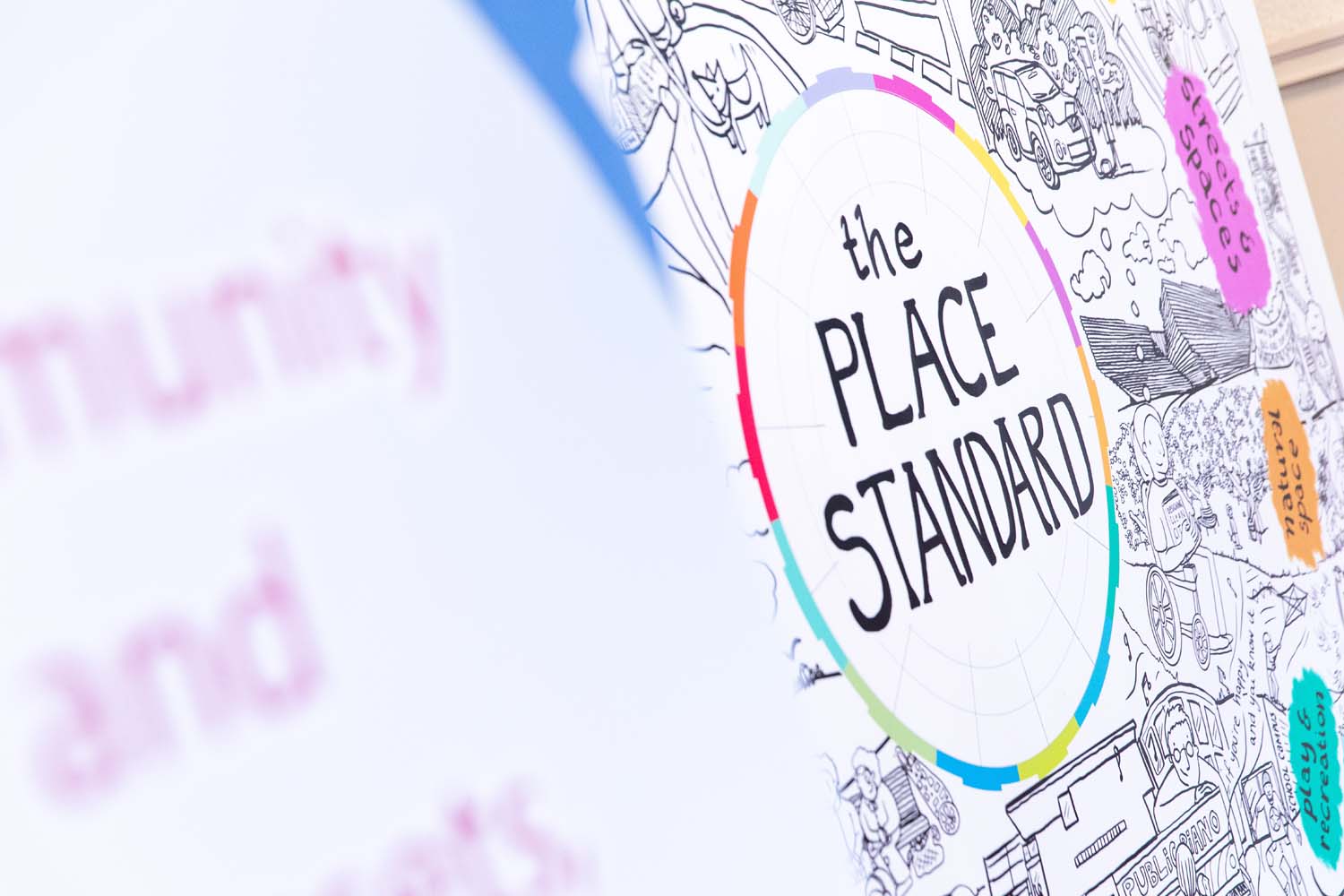The Place Standard Tool will build a planning system to empower all citizens

In this guest blog (from 2019) politics student Daniel Bulman shares his personal observations about the potential of the Place Standard tool.
My experience with placemaking
The Place Standard Tool has been developed as a method of involving citizens in the planning process, including those who do not usually participate. There are numerous positive impacts this can have on political enfranchisement and health outcomes.
One sphere in which I have observed the impact of place in my daily life is as a university student. I have witnessed universities expanding their built presence to transform areas of cities. This is occurring in towns and cities across Scotland and the world. Often new university buildings and privately built accommodation blocks make physical contact with local areas previously untouched by higher learning buildings.
Clearly, the growth of educational institutions offers a great economic reward for our cities and towns but it must be managed in order to benefit everyone in the area. Given that people’s local community holds such an important place in their hearts, all residents need to be consulted in transformative planning processes like these. I will explain how the Place Standard Tool offers an improved method for making such connections, involving communities and the broader impacts this can have.
Our place is our primary political experience
The immediate local community may be considered the initial and most frequent way that people observe and directly interact with the wider political world outside their home. Levels of satisfaction with the sense of place in the local area, composed of such elements as the state of the high street, architecture and the social community, are crucial. Equally so is a belief that residents have a role in creating it.
These factors are often extrapolated by citizens into judgements about larger economic and political processes and how much they feel they can influence them. Low satisfaction and little feeling of political efficacy at the local level push people away from engaging fully with political processes that appear detached from their reality. This, in turn, drives dissatisfaction with larger policies that fail to visibly help their area of civic pride. Accordingly, this should be a priority for politicians at all levels of government.
Academic work has documented how communities impacted by trends such as gentrification, clearance or economic loss want to feel listened to by actors such as developers and councils to understand and shape the responses to the issues. Decisions cannot be imposed on citizens but need to be managed collaboratively with local residents to form a sense of ownership of policies. Ultimately a top-down system will be less successful at devising policies for a community than a collaborative one which fully understands their priorities.
This has been a historic issue in the management of our places and only recently has governance made efforts to improve. A big area of further improvement can be made by involving many more members of communities rather than only a regular, more confident selection.
Using clear language will include everybody
The Place Standard Tool looks to resolve this by formulating a bottom-up system to communicate local priorities to policymakers. The tool poses questions on 14 topics to participants to discuss and rate as a group. The questions use basic language to ensure that people understand the issues being discussed and to ensure there is transparency in what is being communicated. This prevents less confident residents from feeling alienated by planning jargon and ultimately declining to participate.
Encouraging people to discuss together can overcome initial differences that may exist in a community. In fact, talking together about accessible topics can help people formulate a shared ideal on issues they may have not previously discussed or thought about in depth. The discussion topics range from public transportation to identity and economy.
Recent measures by the Scottish and UK governments to devolve fiscal and planning powers to regional local governments, such as through the Glasgow City Region City Deal, must attempt to engage with local communities in such a way. Engagement with local people and local businesses is the only way to ensure funds are used effectively and the processes are understood by those communities intended to benefit.
Engaging with your local place can improve your health outcomes
The benefits are not only democratic in nature. The same sense of influence in a local community that I have described can also help achieve health outcomes. Likewise, the design of neighbourhoods can encourage healthy behaviours. It is problematic if only certain members in an area have this sense of control, so a tool to allow the process to reach many more is essential. Harry Burns articulated this point at his speech as this month’s Making Place conference, held by NHS Health Scotland, the Scottish Government and Architecture and Design Scotland, in partnership with the WHO European Healthy Cities Network.
He explained that by helping people to build trust with authorities, as the Place Standard Tool does, they can then make a difference in shaping their local area. As a result, they will help create communities that encourage healthier behaviour, by shaping design responses such as schemes to increase walk-ability. Furthermore, this feeling of influence and control is fundamental in creating a healthy, resilient mindset. The impacts will filter out to aid achievement of health, as defined by the WHO as “a state of complete physical, mental and social well-being and not merely the absence of disease or infirmity.”
“Ask people to take control of their lives, build their trust, and people can make choices that support their health. We must create places that do that.”
Working together to improve the quality of places across Scotland
The Place Standard is an easy-to-use tool to evaluate a place, from planning community services to designing and improving neighbourhoods. Follow the link below to read more and see real-life examples of the tool in action.
